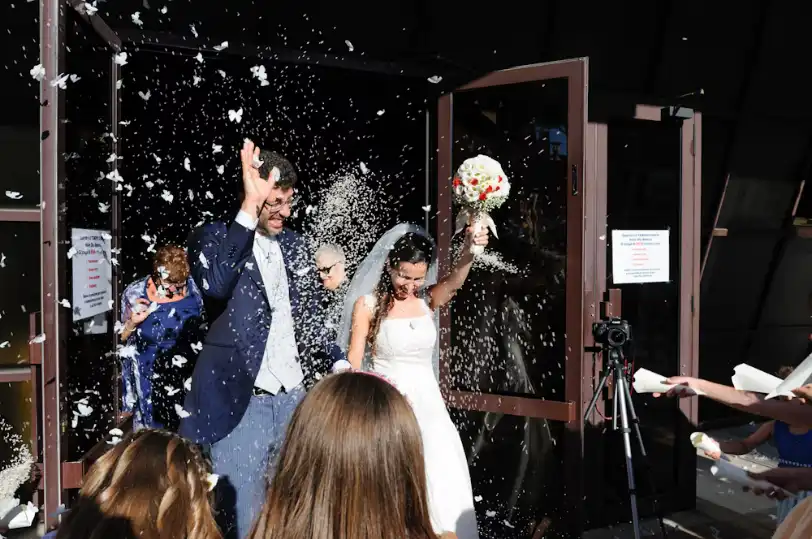Ready to decode modern romance? Buckle up! We’re exploring what truly counts as a date in today’s swipe-and-like world. From coffee shop meetups to virtual wine nights, courtship has evolved faster than you can say “It’s complicated.”
The Evolving Definition of a Date
The concept of a “date” has undergone a remarkable transformation, mirroring shifts in our social landscape. Gone are the days when a date strictly meant a planned rendezvous at a fancy restaurant. Today’s dating scene blurs the lines between casual hangouts and romantic encounters.
In this digital era, the definition has expanded to encompass a wide spectrum of interactions. From virtual coffee chats to group adventures, the modern dating landscape is a tapestry of possibilities. As relationship expert Dr. Amelia Heartfield notes:
“The essence of a date lies not in its form, but in the special attention and interest shared between two individuals exploring a potential connection.”
This evolution reflects a shift towards more fluid and personal expressions of romance. Traditional markers—such as who pays or effort put into appearance—have given way to a focus on genuine connection and shared experiences.
This shift has brought new challenges. The friend zone and flirty banter have become more prevalent, creating a delicate dance of intentions. The spark of attraction and sexual tension now coexist with the desire for authentic companionship, making modern dating nuanced.
As we navigate this terrain, it’s clear that the evolving definition embraces diversity and individual expression. Whether it’s a game night filled with laughs or an intimate walk, a sincere connection and mutual desire to move further matter the most.
Now that we’ve explored how dating has changed, let’s break down the key elements that truly make something a date in today’s world.
Key Elements That Make Something a Date
Navigating the modern hanging scene can leave even the most sociable butterflies feeling a bit shy. Fear not! We’ve decoded what truly constitutes a date in today’s intricate social landscape. Here are the key elements that transform a casual meetup into a potential romantic rendezvous:
- Intentional One-on-One Time: When someone makes a concerted effort to spend quality time with you, away from the usual crowd, it’s a clear sign of interest.
- The Subtle Art of Dressing Up: Notice if they’ve put extra thought into their dress or appearance. A little effort speaks volumes.
- Flirting with Purpose: Playful banter and flirting can turn an ordinary outing into a date. Watch for those lingering glances and gentle teases.
- Planning with Care: If they’ve taken the initiative to organize something thoughtful, considering your interests, it’s likely more than just a friendly hangout.
- The Magic of Eye Contact: Intense eye contact that makes you feel like you’re the only person in the room is a telltale sign of romantic interest.
- Physical Proximity: Notice if they tend to lean in closer during conversation or find excuses for light, appropriate touches.
- Undivided Attention: When someone is fully present, putting away their phone and focusing solely on you, it’s a good indicator of genuine interest.
- Expressions of Affection: Look for subtle signs of affection, like compliments or gestures that show they’re thinking about your comfort.
Remember, it’s okay to feel a bit embarrassed or uncertain. Open communication is key to avoiding misunderstandings. If you’re ever in doubt, there’s no harm in gently clarifying intentions. After all, people appreciate honesty in matters of the heart.
With these key elements in mind, let’s explore how technology has revolutionized the modern dating landscape.
The Role of Technology in Modern Dating
In the digital age, technology has revolutionized the dating landscape, blurring the lines between virtual and real-world connections. Social media platforms have become unexpected matchmakers, with likes and comments serving as modern-day flirtation signals. Dating apps, once considered taboo, are now mainstream, offering a smorgasbord of potential partners at our fingertips.
This tech-driven shift has redefined what constitutes a “date.” Virtual coffee chats and video game sessions now stand alongside traditional dinner outings. The rise of location-based apps has even spawned the phenomenon of “proximity dating,” where serendipitous encounters are facilitated by algorithms.
However, this digital revolution isn’t without its pitfalls. The ease of connection can lead to choice paralysis, leaving some feeling embarrassed about their online dating endeavors. Moreover, the line between genuine interest and casual interaction has become increasingly blurred, making it challenging to discern true intentions.
Despite these challenges, technology has undeniably expanded the dating pool, allowing individuals to connect based on shared interests and values rather than mere proximity. It’s transformed the dating landscape into a dynamic, ever-evolving ecosystem where traditional courtship rituals coexist with innovative digital approaches. The future of romance is being rewritten with every swipe, like, and virtual encounter.
Now that we understand technology’s role, let’s dive into the various types of dates you might encounter in the modern era.
Types of Dates in the Modern Era
| Modern Date Type | Description | Unique Twist |
|---|---|---|
| Adventure Quests | Escape rooms, scavenger hunts | Tests problem-solving skills |
| Culinary Explorations | Cooking classes, food tours | Engages multiple senses |
| Virtual Reality Rendezvous | Shared VR or online games | Bridges physical distances |
| Wellness Wanderings | Yoga sessions, spa days | Promotes mutual self-care |
| Artistic Endeavors | Painting workshops, street art tours | Encourages creative expression |
The modern dating landscape has blossomed into a vibrant tapestry of experiences, far beyond the classic dinner-and-movie formula. Today’s couples seek unique ways to connect, often blending personal interests with innovative concepts to create unforgettable encounters.
Consider the rise of “Adventure Quests” as a romantic option. These interactive experiences, like escape rooms or city-wide scavenger hunts, offer insights into a potential partner’s problem-solving skills and teamwork abilities. It’s a refreshing departure from awkward silences over appetizers!
For the culinary enthusiasts, “Gastronomic Explorations” have gained popularity. These outings involve active participation in cooking classes or guided food tours, allowing pairs to bond over shared tastes and new flavors. It’s a chance to create something together, both literally and metaphorically.
In our tech-savvy era, “Virtual Reality Rendezvous” have emerged as an intriguing option. These immersive experiences allow couples to explore fantastical worlds together, even when physically apart. It’s particularly appealing for long-distance relationships or during challenging times.
The wellness trend has also influenced romantic encounters, giving rise to “Mindful Meetups.” These focus on mutual self-care, ranging from couples’ yoga sessions to meditation retreats. They offer an opportunity to grow together while prioritizing health and well-being.
Lastly, “Artistic Adventures” have gained traction. Whether it’s a painting workshop or a street art tour, these outings encourage creative expression and appreciation of beauty. They can reveal hidden talents and foster a deeper understanding of each other’s perspectives.
While some might feel embarrassed about these unconventional ideas, they offer unparalleled opportunities for genuine connection. The key is finding an experience that resonates with both individuals’ interests and comfort levels.
As we’ve seen the range of modern date types, let’s compare the dynamics of group hangouts versus one-on-one dates.
Group Hangouts vs. One-on-One Dates
The landscape of modern romance has evolved, blurring the lines between platonic and romantic encounters. Group hangouts and one-on-one dates each present unique advantages and challenges in the quest for connection. Group settings often create a relaxed atmosphere where personalities shine naturally, sparking organic conversations and revealing social dynamics. However, they may limit intimate moments crucial for deepening bonds.
Conversely, one-on-one dates offer focused attention and opportunities for genuine connection. They allow for deeper conversations and exploration of shared interests without distractions. Yet, they can also intensify nerves, leading some to feel embarrassed or self-conscious. The intimate setting may create expectations that are both thrilling and daunting.
Interestingly, many modern relationships begin with group interactions before transitioning to individual dates. This gradual progression allows for a natural build-up of comfort and familiarity. The effectiveness of either approach largely depends on individual personalities and preferences. Some thrive in lively group dynamics, while others prefer the intensity of one-on-one encounters.
Ultimately, both scenarios offer valuable insights into potential romantic compatibility. The key lies in balancing these experiences to gain a comprehensive understanding of a potential partner in various social contexts. By navigating both group and individual settings, modern daters can create a more holistic picture of their compatibility and connection with a potential romantic interest.
Now that we’ve distinguished between group and individual dates, let’s explore the telltale signs that an outing is definitely a date.
Signs That It’s Definitely a Date
Navigating the murky waters of modern romance can leave even the most confident individuals feeling a bit embarrassed. Fear not! Here’s your ultimate guide to decoding those subtle (and not-so-subtle) signs that you’re definitely on a date:
- The Expectation Dance: There’s a palpable anticipation in the air, a subtle electricity that goes beyond casual friendship vibes.
- Effort Extravaganza: They’ve clearly put thought into their appearance and the chosen activity, showing they want to impress.
- Undivided Attention: Their focus is laser-sharp on you, with minimal phone-checking or environmental distractions.
- Body Language Ballet: Subtle mirroring of your movements, leaning in during conversation, and maintaining open postures are telltale signs.
- Compliment Cascade: Genuine, specific compliments that go beyond the superficial indicate genuine interest.
- Future Whispers: They casually mention potential future activities or outings, testing the waters for continued connection.
- Touch Tentatives: Light, appropriate touches on the arm or shoulder during conversation signal romantic intentions.
- Curiosity Quotient: They ask thoughtful questions about your life, dreams, and opinions, showing a desire to truly know you.
- Laughter Linkage: Shared humor and inside jokes create a unique bond that transcends friendship.
- Extended Epilogue: The reluctance to end the outing, with lingering goodbyes or suggestions for “one more stop,” speaks volumes.
- Attentive Listening: They remember details from previous conversations, demonstrating they value your words.
- Chivalrous Gestures: Small acts of kindness, like holding doors or offering their jacket, suggest romantic intent.
- Exclusivity Hints: They subtly inquire about your relationship status or mention their own availability.
Remember, these signs often work in concert. While one alone might not definitively spell “date,” a combination paints a clearer picture. Trust your gut and take delight in the journey of exploration!
With these clear indicators in mind, let’s navigate the tricky waters of ambiguous dating situations.
The Gray Area: When It’s Not Clear If It’s a Date
Navigating the murky waters of modern connections can leave even the savviest socialites feeling embarrassed. Picture this: you’ve just spent a delightful afternoon with someone, laughing over coffee and sharing stories. As you part ways, a nagging question lingers – was that a date? Welcome to the gray area, where intentions blur and assumptions run wild.
These ambiguous encounters are increasingly common in our casual culture. Maybe it’s a colleague inviting you for “drinks after hours,” or a friend who suddenly seems extra attentive during movie night. The key to deciphering these situations lies in subtle cues and open dialogue.
Pay attention to the setting and effort invested. A carefully planned outing often hints at romantic intentions. However, don’t rely solely on external factors. The most crucial element is the energy between you two. Does the conversation flow effortlessly? Is there an underlying current of excitement?
When in doubt, embrace transparency. A simple, “I really enjoyed this. Would you consider it a date?” can clarify intentions without pressure. Remember, vulnerability often leads to deeper connections, whether platonic or romantic.
Ultimately, embracing the ambiguity can be thrilling. These gray areas allow for organic growth and unexpected discoveries about yourself and others.
As we’ve seen, dating can be confusing. Let’s explore how communication can clear up any misunderstandings.
Communication: The Key to Avoiding Date Confusion
In the maze of modern connections, clear communication is our guiding thread through potential misunderstandings. When deciphering platonic or romantic intentions, honesty becomes our most potent tool. By openly expressing expectations, we sidestep awkward misalignments.
Consider this approach:
“I’ve truly enjoyed our time together. How do you envision our connection evolving?”
This transparent dialogue creates a safe space for both parties to voice thoughts without feeling embarrassed.Vulnerability often paves the way for deeper bonds. By fostering open communication, we not only clarify intentions but also build a foundation of trust and respect, essential elements in any meaningful relationship.
Now that we’ve covered the importance of communication, let’s address some frequently asked questions about what constitutes a date.
Frequently Asked Questions
Can hanging out be considered a date?
Hanging out can blur friendship and romance lines. The key lies in shared intentions and energy. A subtle atmosphere shift, lingering glances, or underlying excitement might signal more than casual socializing. Context and personal dynamics are crucial in this potential romance dance.
How do you know if someone is asking you on a date?
Decoding romantic intentions? Watch for specific plans, nervous energy, and appearance efforts. Listen for “together” or “us.” Still unsure? A playful “Is this a date?” can clear the air without feeling embarrassed. These clues often signal more than casual socializing.
Is getting coffee together always a date?
Coffee meetups blur social lines. Context and intentions matter more than the beverage. A casual latte might be friendly, while an intimate evening rendezvous could spark romance. Some use coffee for low-pressure dates, others for networking. Clear communication prevents embarrassed misunderstandings in these caffeinated encounters.
Can a group activity be considered a date?
Group activities can indeed be dates, depending on the underlying intentions and energy between individuals. While group settings offer a relaxed atmosphere, subtle cues like prolonged eye contact or exclusive conversations can signal romantic interest. Clear communication remains crucial to avoid potentially embarrassed misunderstandings in these multi-faceted scenarios.
How has online dating changed what’s considered a date?
Online dating has revolutionized the “date” concept, creating a multi-stage process. Virtual connections now precede physical meetings, with video chats and messages serving as preliminary dates. This digital courtship fosters deeper pre-meeting bonds, blurring online and offline interactions. In this new landscape, embarrassed first-date jitters often fade away.
Is it a date if one person doesn’t realize it’s a date?
Misaligned expectations can lead to awkward situations. One person might view an outing as casual, while another sees it as romantic. This discrepancy doesn’t negate the date-like qualities but highlights the need for clear communication in modern social dynamics. Let’s explore the key differences between dating and casual socializing.
How do dating and just hanging out differ?
Hanging out and dating differ in intention and atmosphere. The former is casual and spontaneous, while the latter involves romantic potential and planned activities. The key lies in subtle energy and expectations between individuals. Even seemingly relaxed interactions can be dates if there’s mutual romantic interest, making clear communication essential to avoid feeling embarrassed.
How important is planning in determining if something is a date?
Planning’s role in defining dates is nuanced. While thoughtful arrangements can signal romantic intent, spontaneity doesn’t disqualify an encounter. The essence lies in shared expectations and energy. A meticulously planned evening and an impromptu coffee run hold equal potential for connection, provided both parties are invested in the interaction’s romantic possibilities.











